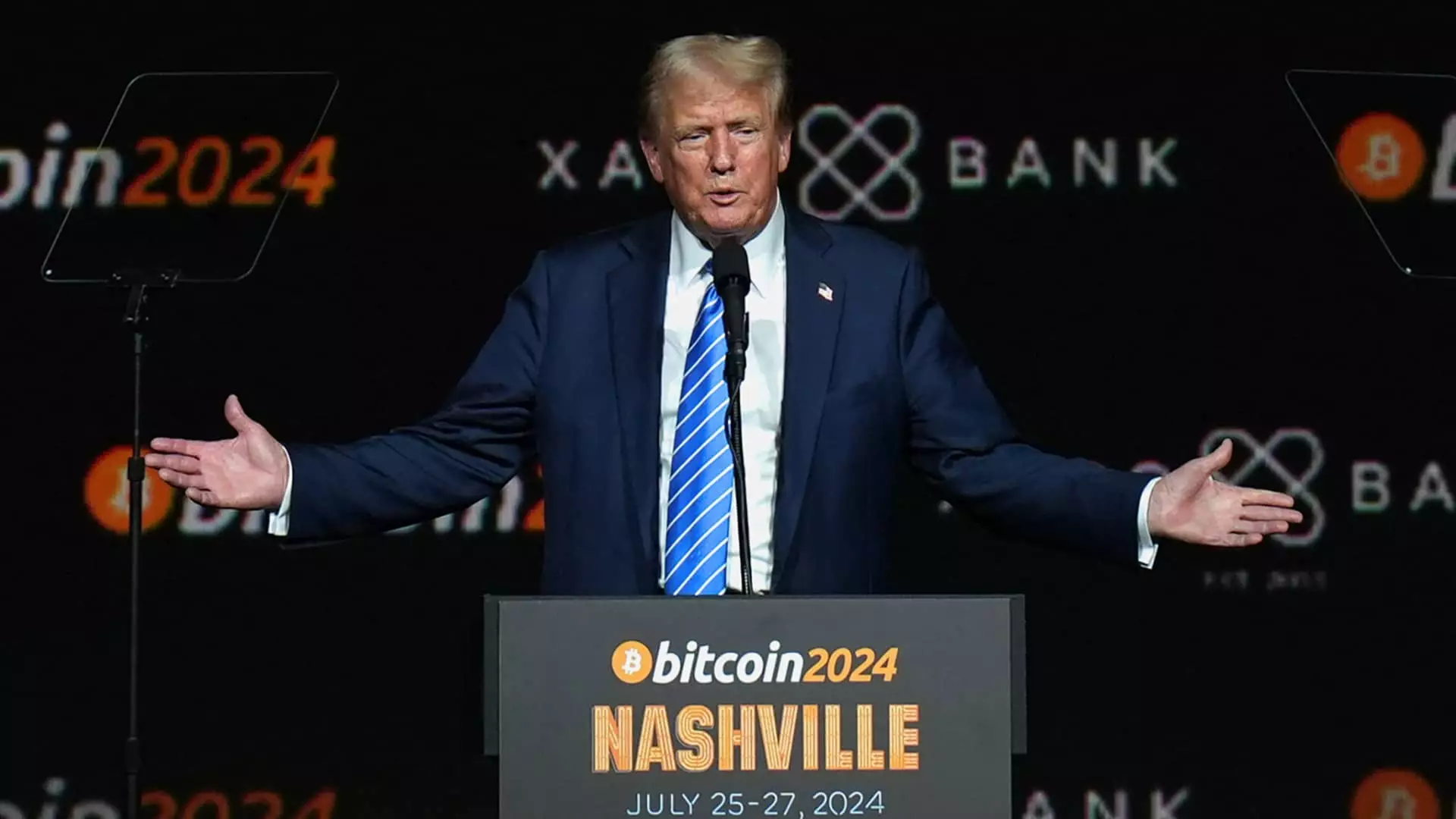In a time when cryptocurrency is burgeoning yet fraught with challenges, the recent unveiling of Donald Trump’s crypto project, World Liberty Financial (WLF), has sparked robust discussions not just about digital finance but also about the intersection of politics and business. The release of a significant 13-page document, referred to as the “World Liberty Gold Paper,” showcases the blueprint for this venture, including token allocations and potential revenue sharing, raising eyebrows and concerns within both the financial and political landscapes.
World Liberty Financial presents itself as an innovative cryptocurrency banking platform intended to facilitate various financial activities, such as borrowing, lending, and investment in digital assets. Central to the project is the WLFI token, which was launched with an initial trading price of 1.5 cents. Notably, WLF has set ambitious financial targets, eyeing a total of $300 million in initial sales at a staggering $1.5 billion valuation. However, as of now, the project appears to have sold only a fraction of that target—$12.9 million—indicating potential struggles in attracting sufficient investor interest right from the outset.
The central concern surrounding this endeavor is the financial windfall anticipated for the Trump family. In the documents released, it is disclosed that Donald Trump and his family may benefit disproportionately, receiving an impressive 75% of the net revenue. The purported allocation of 22.5 billion $WLFI tokens, valued at an eye-watering $337.5 million, raises ethical questions about the commodification of the Trump name and influence as he barrels through the electoral process.
Critically, the World Liberty Gold Paper attempts to construct a narrative distancing itself from political affiliations. It explicitly states that neither Trump nor his family hold roles as managers or directors of WLF, positioning the project as politically neutral. However, while WLF emphasizes that its operations are not directly tied to Trump’s political ambitions, the financial entwinement of his family raises questions about the degree of separation one might consider valid amidst ongoing campaign activities.
The ambiguity in delineating the project’s political neutrality is compounded by the fact that Trump is actively contending for the presidency. The simultaneous promotion of a crypto project while running for office creates a murky area where personal financial gain may be seen as conflated with public service.
A noteworthy aspect of WLF’s operational framework deals with its revenue structure. The document outlines that a Delaware-based firm linked to Trump, DT Marks DEFI LLC, will reap three-quarters of the net protocol revenues generated from multiple revenue streams, including platform fees and token sales. This setup reflects traditional venture capital structures, yet the association of a political figure adds an extra layer of complexity and skepticism.
Moreover, 30 million dollars of initial revenues are earmarked for operational reserves, leaving stakeholders to question the potential for profitability and sustainability in WLF’s financial planning. If the revenue allocation heavily favors the Trump family while limiting broader stakeholder benefits, it may provoke backlash from investors and users alike.
The token distribution model itself is equally contentious. As per the breakdown, a considerable 35% of all WLFI tokens are designated for sale, while 32.5% are earmarked for community growth, and 30% for initial support. The remaining 2.5% is allocated to the team and advisors, which raises questions about the equity and transparency of the project, especially as these numbers are framed as being subject to change.
World Liberty Financial represents more than just another crypto venture; it symbolizes a critical point of intersection between financial innovation and political aspiration. As cryptocurrency projects inherently carry risk, the potential implications of WLF’s structure and revenue distribution could resonate far beyond its immediate stakeholders. As investors weigh in on the credibility of the proposition backed by a polarizing political figure, WLF must navigate both the uncertainties of financial markets and the scrutiny of public perception. This project stands not just as an economic venture but also as a testament to the evolving landscape of political financial endeavors, warranting critical examination.


Leave a Reply